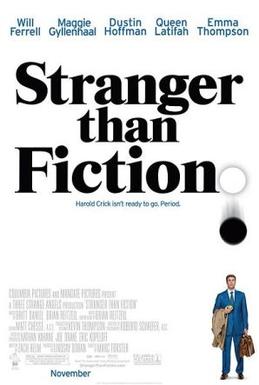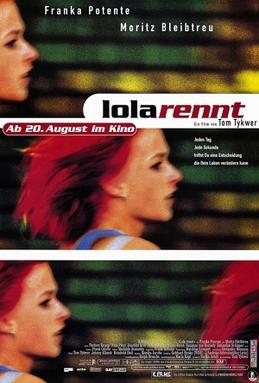User:Zuhui/Writers' Protocol: Difference between revisions
| (9 intermediate revisions by the same user not shown) | |||
| Line 24: | Line 24: | ||
==Performative== | ==Performative== | ||
===Motif expansion=== | ===Motif expansion=== | ||
'''1.''' Make an entry for a small detail observed (e.g., a prop, color, or expression). | |||
'''2.''' From the next sentence onward, expand on the observation of the motif as much as possible. | |||
===Action - Reaction=== | ===Action - Reaction=== | ||
'''1. State an action:''' Begin each sequence with a clear and specific action. | |||
'''2. Respond with a Reaction:''' Follow the action with a direct reaction. This can come from the environment, other characters or the action’s sequences. | |||
'''3. Alternate action and reaction:''' Continue alternating between actions and reactions to create rhythm. | |||
'''Guideline''' | |||
* layer emotional and physical response: Let reactions mix with emotions, thoughts, or physical sensations. This part could convey fictional elements. | |||
* use the environment of the room as an active participant in the action-reaction cycle. | |||
* writers can completely derail the narrative by adding completely unexpected-fictitious reaction. | |||
===Observation - Interpretation=== | ===Observation - Interpretation=== | ||
'''1. Begin with an observation:''' start with a clear, concise description of what is happening in the room. This entry should be written objective and factual. Limited to what can be seen, heard (basically something that is directly perceived). | |||
'''2. Add an interpretation:''' follow the observation with a personal and speculative interpretation of the action. This should be written subjective and thoughtful. Also should provide context, possible(speculative) motivation for the observed action. | |||
'''3. Alternate observation and interpretation:''' also to create rhythm. | |||
'''Guideline''' | |||
* ambiguity can be a good element in interpretation. Leave a room for uncertainty or alternative possibilities. | |||
* Contradictory interpretation to the observation can be fun too. | |||
* use the environment of the room as an active participant in the interpretation | |||
===Intention - Outcome speculation=== | ===Intention - Outcome speculation=== | ||
* this protocol is a variation from 'Observation - Interpretation' protocol. | |||
* the writer can speculate on a subject’s intention behind their observed action and to extend that action into a speculative outcome. | |||
'''1. Observe and speculate the intention:''' Entry juxtaposing an objective observation with speculative/fictional intention behind the observed fact. | |||
'''2. Speculate on the Outcome:''' Develop the action and intention into a speculative result. which is completely fictional. | |||
'''Advanced''' | |||
* Multiple intention speculation: imagine different possible intentions for a single action. | |||
* Outcome timeline extension: speculate on both short-term and long-term outcomes of the action. | |||
* Spatial extension: extend the outcome beyond the current space or setting of the event, imagine the action to influence other locations or contexts. | |||
* Emotional consequences: the outcome can be result in invisible channel such as emotions. Link the action and outcome to emotional shifts or revelations. | |||
===Imagined dialogue=== | ===Imagined dialogue=== | ||
When conversations takes place in the room, the writer can imagine the dialogue and add it to the script. | |||
'''Imagining Nonverbal Conversations:''' writer can also make the script as if the conversation is taking place not through words but through glances, gestures, and movements. (speculation, fictional) | |||
===Personification & Internal monologue=== | ===Personification & Internal monologue=== | ||
===Narrator manipulation=== | ===Narrator manipulation=== | ||
* This protocol can be activated when the writer interacts with a visitor's live reading. The writer can either turn the reader into a character or integrate their reading act into the story. | |||
* When this protocol is activated, always refer to the reader as '''"the narrator"''' | |||
'''Reaction to voice:''' the writer responds to the pitch or tone of the narrator’s voice. | |||
'''Questions and commands:''' as the narrator reads the script, writer can integrate direct questions or commands for the narrator into the text. | |||
'''Manipulate reader’s thoughts and emotions:''' as the narrator reads the script, writer can reflect, distort, speculate, or fictitiously state the narrator’s state of mind or an emotion. | |||
'''Repetition and variation:''' technically, the writer can manipulate the narrator to read whatever is written on the screen. Writing a repetitive script for the narrator to read aloud can create musical effects, especially along with Eleni’s soundscape. Also, the repetition can evolve with subtle variations over time. | |||
=What makes a narrative?= | =What makes a narrative?= | ||
| Line 56: | Line 104: | ||
</blockquote> | </blockquote> | ||
===structure and style=== | ===structure and style=== | ||
the film's technical and stylistic choices that shape the experience of its narrative | the film's technical and stylistic choices that shape the experience of its narrative: | ||
* '''Parallel timelines:''' The same story is told three times, with small variations: Lola’s interactions with people or objects change subtly (e.g., bumping into someone, taking a different route). These small differences result into radically different endings—success, failure, or tragedy. This structure highlights how choices and chance shape the course of events, creating a butterfly effect. | * '''Parallel timelines:''' The same story is told three times, with small variations: Lola’s interactions with people or objects change subtly (e.g., bumping into someone, taking a different route). These small differences result into radically different endings—success, failure, or tragedy. This structure highlights how choices and chance shape the course of events, creating a butterfly effect. | ||
* '''Time, repetition and variation:''' The 20-minute timeframe repeats per story, letting the audience to see how time and timing shape events and alignments. This deliberate repetition of events with slight changes emphasizes how narratives can diverge based on minor shifts in detail. | * '''Time, repetition and variation:''' The 20-minute timeframe repeats per story, letting the audience to see how time and timing shape events and alignments. This deliberate repetition of events with slight changes emphasizes how narratives can diverge based on minor shifts in detail. | ||
Latest revision as of 17:47, 16 November 2024
SI25 Sounds of Making, ‘Lost in Narration’
Language itself is elastic, bouncing from medium to medium, with each phase refracting meaning. This performance is to experience the nuances lost and gained, the tension between translation and miscommunication within an endlessly looping narrative that is never quite stable.
In this live performance, two writers in the room observe and document the ongoing events in real time, describing the atmosphere, visitors, and interactions as they occur. This live script is projected onto a screen, letting everyone to view the room through the writers' perspective. As viewers read these words, they become characters in a narrative that may or may not fully reflect reality.
At the same time, a performer with a microphone reads the live script aloud, narrating the text into spoken form. This narration is then immediately processed through an abstract soundscape, adding musical layers that alter the tone, rhythm, and mood of the narrative.
Finally, the narrative returns to text form, appearing as printed fragments on a table. Each step in this loop —from text to speech, from speech to music, and back to text—brings subtle distortions, as each medium imposes its own nuances and limits. With each transition, the original meaning drifts, sometimes losing clarity or gaining new interpretations. Weaving misinterpretations and distortions into the narrative is part of experiencing the language.
Two writers and a parallel narrative
parallel or intersecting?
In this live-scripting performance, Lexie and I document our observations of the room as writers, creating two parallel narratives—a structure where two or more stories unfold independently while coexisting side by side (more like every other sentences, are stacked on top of each other like a sandwich).
Although we are observing the same space, we craft our own stories from different perspectives and viewpoints. These independent records could give visitors a multi-layered interpretation(and misinterpretation**) of the space when compared or contrasted.
In a broader sense, the records of the two writers may influence or intersect with each other, potentially forming a unified narrative. Since the observation occur in the same space, the two narratives will naturally interact.
Writers' protocol
Framework
1. Different font colors: Use different font colors for writers to distinguish between the two perspectives in the live script.
2. Time stamps: Record every entry with a timestamp. Timestamp can help each observation stand independently in chronological order (and to prevent the narratives from resembling a conversation?) and emphasizing that this is happening in real time and space.
3. Limit the amount of sentence: Limit each writer to one sentence per entry, to create a short, segmented scripting style.
4. Writers taking turns: When one writer completes a sentence, press 'Tab' to hand over to the other writer (or use a similar method to alternate turns). 4-1. What happens if one writer takes a break? -The remaining writer continues writing.
Performative
Motif expansion
1. Make an entry for a small detail observed (e.g., a prop, color, or expression). 2. From the next sentence onward, expand on the observation of the motif as much as possible.
Action - Reaction
1. State an action: Begin each sequence with a clear and specific action. 2. Respond with a Reaction: Follow the action with a direct reaction. This can come from the environment, other characters or the action’s sequences. 3. Alternate action and reaction: Continue alternating between actions and reactions to create rhythm.
Guideline * layer emotional and physical response: Let reactions mix with emotions, thoughts, or physical sensations. This part could convey fictional elements. * use the environment of the room as an active participant in the action-reaction cycle. * writers can completely derail the narrative by adding completely unexpected-fictitious reaction.
Observation - Interpretation
1. Begin with an observation: start with a clear, concise description of what is happening in the room. This entry should be written objective and factual. Limited to what can be seen, heard (basically something that is directly perceived). 2. Add an interpretation: follow the observation with a personal and speculative interpretation of the action. This should be written subjective and thoughtful. Also should provide context, possible(speculative) motivation for the observed action. 3. Alternate observation and interpretation: also to create rhythm.
Guideline * ambiguity can be a good element in interpretation. Leave a room for uncertainty or alternative possibilities. * Contradictory interpretation to the observation can be fun too. * use the environment of the room as an active participant in the interpretation
Intention - Outcome speculation
- this protocol is a variation from 'Observation - Interpretation' protocol.
- the writer can speculate on a subject’s intention behind their observed action and to extend that action into a speculative outcome.
1. Observe and speculate the intention: Entry juxtaposing an objective observation with speculative/fictional intention behind the observed fact. 2. Speculate on the Outcome: Develop the action and intention into a speculative result. which is completely fictional.
Advanced * Multiple intention speculation: imagine different possible intentions for a single action. * Outcome timeline extension: speculate on both short-term and long-term outcomes of the action. * Spatial extension: extend the outcome beyond the current space or setting of the event, imagine the action to influence other locations or contexts. * Emotional consequences: the outcome can be result in invisible channel such as emotions. Link the action and outcome to emotional shifts or revelations.
Imagined dialogue
When conversations takes place in the room, the writer can imagine the dialogue and add it to the script.
Imagining Nonverbal Conversations: writer can also make the script as if the conversation is taking place not through words but through glances, gestures, and movements. (speculation, fictional)
Personification & Internal monologue
Narrator manipulation
- This protocol can be activated when the writer interacts with a visitor's live reading. The writer can either turn the reader into a character or integrate their reading act into the story.
- When this protocol is activated, always refer to the reader as "the narrator"
Reaction to voice: the writer responds to the pitch or tone of the narrator’s voice.
Questions and commands: as the narrator reads the script, writer can integrate direct questions or commands for the narrator into the text.
Manipulate reader’s thoughts and emotions: as the narrator reads the script, writer can reflect, distort, speculate, or fictitiously state the narrator’s state of mind or an emotion.
Repetition and variation: technically, the writer can manipulate the narrator to read whatever is written on the screen. Writing a repetitive script for the narrator to read aloud can create musical effects, especially along with Eleni’s soundscape. Also, the repetition can evolve with subtle variations over time.
What makes a narrative?
Reference
Stranger than fiction (2006)
The story revolves around Harold Crick, an IRS auditor, who begins hearing a disembodied voice narrating his life. The voice belongs to Karen Eiffel, an author writing a novel in which Harold is unknowingly the protagonist. Harold's realization that he is part of a story sets the meta-narrative in motion.
a narrative about storytelling
- Author's control vs. character's agency: Harold discovers that his fate is entirely in the hands of Karen, who intends to kill him off in her book. This creates a direct confrontation between the character's desire for agency (Harold wanting to live) and the author's authority over the story.
- The fourth wall..?: The film constantly comments on the process of storytelling. Karen discusses narrative structure, foreshadowing, and character development while Harold just lives out these elements in his "real" life.
- Storytelling cliche as plot points: The film plays with classic literary devices like foreshadowing, existential themes, and the 'hero's journey' to reflect on the role of the author in crafting a story, meaning.
- Life as a story: The narrative also indicates how much control we have over our lives and whether life itself has inherent meaning or is shaped by external "authors" (e.g., fate, society, or actual storytellers).
meta commentary in film form
In the end, Harold's confrontation with Karen completes the meta-narrative full circle. Karen decides to rewrite her ending to spare Harold's life. This decision implies that stories can evolve, just as characters can.
The meta-aspect of Stranger Than Fiction makes the audience constantly aware that they are watching a story about a story. It turns the process of storytelling into a spectacle, where both the author and character (and by extension, the audience) reflect on the meaning of narrative itself.
Lola rennt (1998)
Lola has 20 minutes to gather 100,000 Deutsche Marks to save her boyfriend, Manni, who will otherwise face dire consequences from a botched money drop. The film presents this high-stakes premise through three distinct timelines, each beginning with Lola’s desperate race and ending with wildly different outcomes.
structure and style
the film's technical and stylistic choices that shape the experience of its narrative:
- Parallel timelines: The same story is told three times, with small variations: Lola’s interactions with people or objects change subtly (e.g., bumping into someone, taking a different route). These small differences result into radically different endings—success, failure, or tragedy. This structure highlights how choices and chance shape the course of events, creating a butterfly effect.
- Time, repetition and variation: The 20-minute timeframe repeats per story, letting the audience to see how time and timing shape events and alignments. This deliberate repetition of events with slight changes emphasizes how narratives can diverge based on minor shifts in detail.
- Game-like structure: Each time Lola hangs up a phone and start to 'run' mirrors a video game's cue for 'start'. Where Lola learns and adapts to achieve a better result. This reflects trial-and-error progression, much like levels in a game.
- Flash-forwards: Quick glimpses into minor characters' different futures show how Lola's choices indirectly influence others.
narrative as a construct
The film deconstructs the idea of a single, definitive narrative, representing that narrative (and life) is not linear or fixed but full of possibilities.
- The role of agency: Lola's increasing awareness of her role in the story, particularly in the third(last) run, suggesting a self-awareness that transcends her "character". This shows a meta-commentary on characters' autonomy within narratives.
- Causality vs Chance: The film humorously explores whether outcomes in life and storytelling are determined by deliberate choices or random events.
- Audience engagement: The structure of three repetitive stories invites the audience to actively engage on storytelling by piecing together how small details and variations impact the outcomes.



